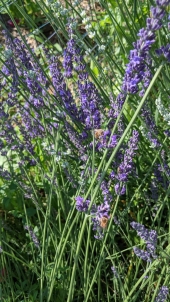




 1
1




"Study books and observe nature; if they do not agree, throw away the books." ~ William A. Albrecht




Medicinal herbs, kitchen herbs, perennial edibles and berries: https://mountainherbs.net/ grown in the Blue Mountains, Australia





 2
2




Karel Bunker wrote:I have a local supplier of compost that takes in food waste from the city and turns it into some nice black looking compost for a very reasonable price ($30 for a cubic yard). I've been using it to form my market garden beds (sometimes right over the old beat-up pasture grass), tarping it for a period of time, and am seeing an explosion of earthworm activity when I go to broad fork a few months down the road. Seems like a good sign.
Recently I've been trying to use the compost to start seeds and grow microgreens when mixed about half and half with a peat/pearlite standard grow mix and have been having poor results. Germination of winterbor kale and salanova lettuce has been spotty, the lettuce has a funky leaf curl, and microgreen flats start growing webby fungus along the top within a few days. Curious about the quality of the compost, I put it under the 400x microscope -Elaine Ingham style- and found pretty much just straight bacteria. No signs of fungus, nematodes, protozoa, or microarthropods.
I was wondering your all's thoughts on this bought-in compost. While it may not have a full compliment of the soil food web, I feel like it is a useful source of organic matter, just may need time for the organisms to develop once in the garden. But as far as starting seeds/growing microgreens goes, do you think it could be contributing to the poor germination/fungus growth? Any other thoughts on why my transplants aren't germinating? Setup uses a combo of t5 and LED strip lights. Doing bottom watering, and I did mix a handful of organic fertilizer in with the transplant medium. Currently running a trial with microgreens with straight potting mix to see if that helps with the fungus problem. Any comments welcome, not the most experienced grower, but working on it!
List of Bryant RedHawk's Epic Soil Series Threads We love visitors, that's why we live in a secluded cabin deep in the woods. "Buzzard's Roost (Asnikiye Heca) Farm." Promoting permaculture to save our planet.





|
Oh darling! You make that outfit POP! -- tiny ad
Learn Permaculture through a little hard work
https://wheaton-labs.com/bootcamp
|






